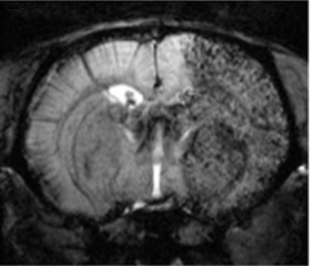- Imaging sensors of nanodrugs integrity for imaging delivery
- Responsive nanosystems for activatable drug delivery
- Enhancement and visualization of the crossing of the blood-brain-barrier

After decades of work, less than 6% of the effective treatments described in the literature for the treatment of CNS diseases have been approved by the FDA and EMA for use in population. This low rate of translation of research into clinical practice is behind the alarming decline in the generation of resources for the development of new treatments for neurological diseases. One of the causes behind this failure is the existence of the blood-brain barrier (BBB), a functional structure that, although essential to maintain brain homeostasis and to protect it from toxic substances and pathogens, is an insurmountable wall for the vast majority of systemically administered neuropharmaceuticals, which reach the brain parenchyma in subtherapeutic doses. This research line of our group focus on the development of functional tools and protocols for the systemic administration of neurodrugs to reach the brain parenchyma, through the development of protocols for the transient opening of the BBB, combined with the use of neurodrug transporters that prevent the reverse flow of neurodrugs from the brain parenchyma to the bloodstream.